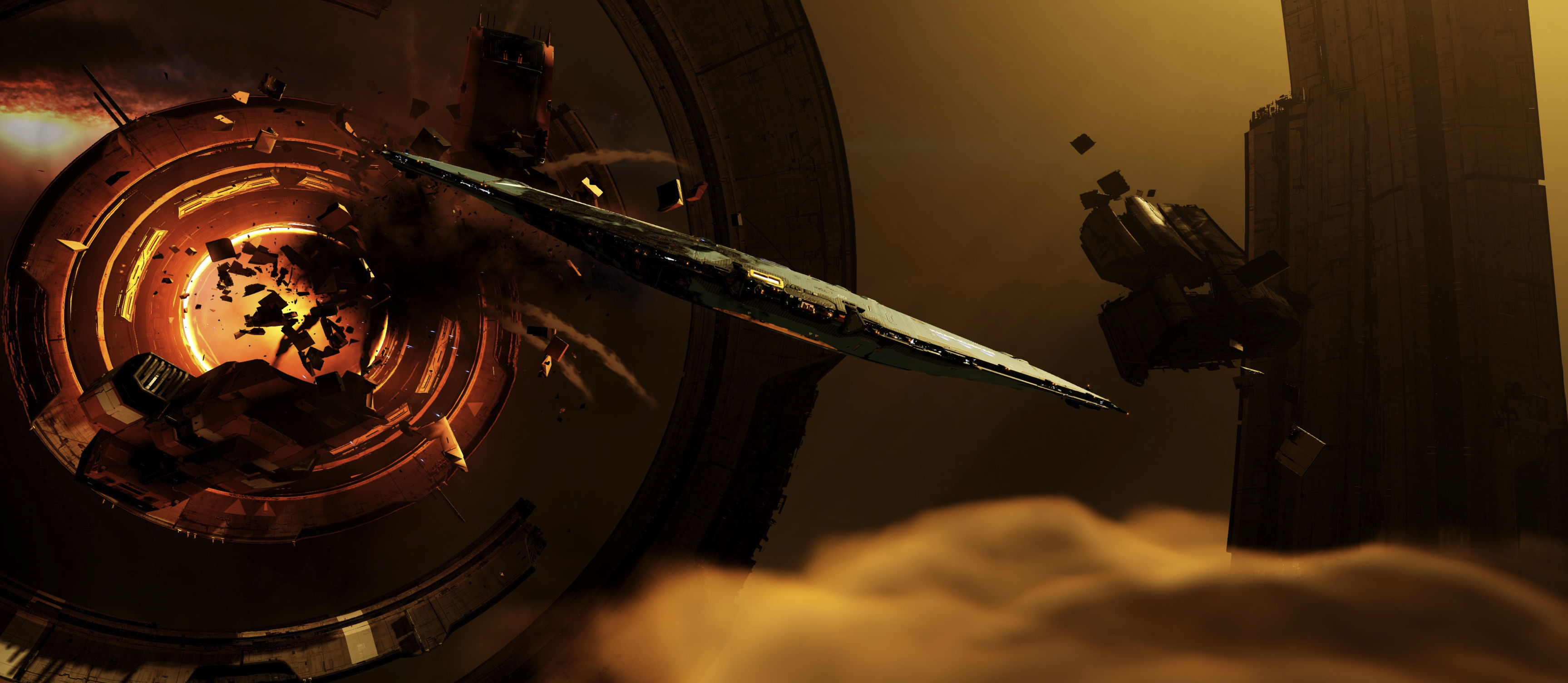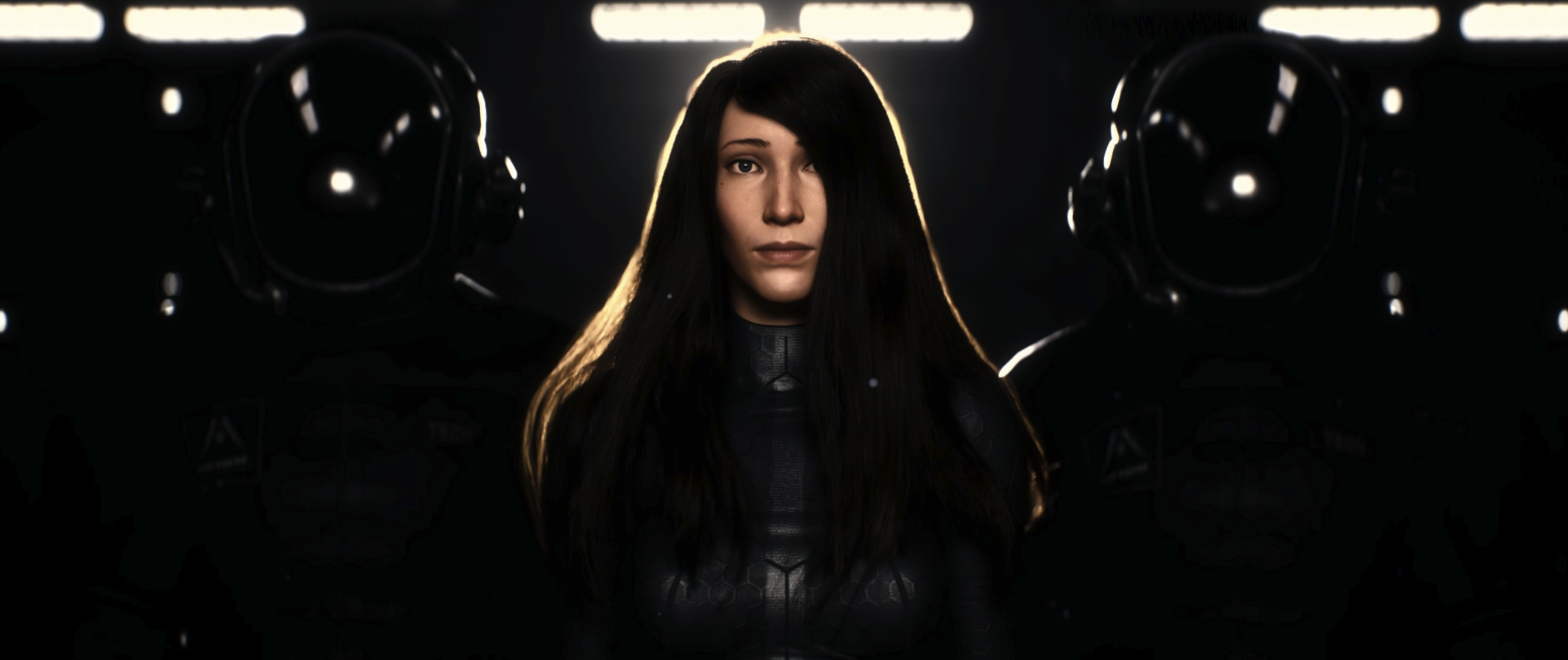It's very strange to be sitting down in 2024 to play a brand new Homeworld game.
The first entry in the pioneering space strategy series, Homeworld, was released back in 1999. A whole other century! A spin-off, Cataclysm, came out in 2000, and Homeworld 2 dropped in 2003. Since then--and that's 21 years for those not counting along at home--there has been a single new Homeworld game released, the ground-based prequel Deserts of Kharak.
Now, in 2024, we've got a whole new Homeworld. Not a spin-off or an adjacent release, but a brand new game in the series, continuing the main storyline, set in space, featuring big-ass motherships, the works. And after being very excited about it for a very long time, I've just finished the singleplayer campaign and have many, many thoughts.
The first three games--the original especially--have gone down as classics for a number of reasons. Firstly, they lifted the RTS genre off the ground and took it into the stars, asking the player to control units in a full 3D space, which was revolutionary at the time. And kinda still is! Despite being decades old, no other game (not even its successors/competitors like Sins of a Solar Empire) has let you fight a deep space battle quite as easily or elegantly as Homeworld did.
Secondly, and perhaps more importantly, it was cool as hell. The ship designs for the original Homeworld--a game released in 1999--still look better than almost anything any sci-fi game, TV show or movie has managed in the decades since. Inspired by the classic sci-fi art of guys like Chris Foss, but adding in their own modern twists, Relic's artists (led by Rob Cunningham, who is now head of Blackbird, Homeworld 3's developers) created a universe of designs (and a slick user interface to boot) that have stood the test of time.

How do you hope to follow a legacy like that all these years later? In Homeworld 3's case, you don't. Well, you don't quite. While many fans would consider the older games almost perfect, it's been 25 years since the original's release, so there's definitely an argument that the formula could do with an update.
Blackbird's approach is to hedge their bets. There's still a lot of classic Homeworld here, and I still love it, but there are also new ideas for a new age, like some slightly different approaches to level design and a between-mission narrative that I don't love as much.
When you first boot up Homeworld 3 and assume control of a fleet, the old magic is still there. The iconic art style, the control scheme, the map screen, comms chatter, building menu–you could jump straight from Homeworld 2 to Homeworld 3 and be completely at home. At first, anyway. When you start running into land in the middle of this space game, you'll notice something's up: perhaps as a result of frustrations with previous mission scripting in a fully 3D space, perhaps just because it looks cool, Homeworld 3's levels nearly all have huge chunks of rock, ice and space station in the middle of them.
It's true, they look cool! And give each level their own identity and flair, which is nice. Their looming presence throughout missions means you can send your units to them, instead of just to positions in 3D space, and sometimes even attach to them, which sounds fun but in practice makes controlling your fleet in the midst of battle hugely annoying. Some objects are so big they've got tunnels you can send fleets through, to outmanoeuvre an enemy or lay an ambush, something which sounds strategic but which you also almost never end up bothering to do.
You can tell how much these new objects fuck with Homeworld's control scheme because the game actually has two setups you can switch between, one based on the originals and one modified to be more contemporary. Neither works that well, and the use of terrain in battles rarely feels like it gives the player what the designers were hoping for. The intent was clearly to make space battles more interesting, but it mostly just make a hard job even harder, especially when some missions require you to interact with ravines or space stations. It's a huge pain in the ass to just traverse around and over them, let alone make use of them in particularly cunning ways.
Another addition that's weird and that I feel bad for saying I don't really like, since it's something I'm normally crying out for more of in my strategy games: a fuller storyline and 3D cutscenes. From Relic's earliest days through to Blackbird's Deserts of Kharak, one of the series' most beloved trademarks were its wonderfully restrained 2D cutscenes; whatever they lacked in animation they made up for with detail and atmosphere.

Homeworld's story, told as sparsely as it was, felt as cold as its deep space setting, a perfect match for the action taking place outside of it. By keeping things so brief, it let me imagine the details, and kept the game's focus on what it did best: its beautiful ships and galactic vistas. Homeworld 3, on the other hand, opts for a fully cinematic approach to its story, with actual characters and a plot, and I'm sorry but it's all just a bit...dull. This is a universe whose focus used to be as broad as the stars themselves; yanking the camera down to ground level where we really only meet four characters robs Homeworld 3's story of some grandeur.
Everything else is mostly the same old Homeworld, and that's as good as good news gets. It's visually stunning, striking the perfect balance between maintaining the series' traditional style while clearly introducing new ships and ideas, and as annoying as the game's terrain is to play, it's nothing short of gorgeous to look at, adding an even greater sense of scale to its missions, which were already one of the masters of depicting "very big stuff in space".
I'm glad each unit's little radio chatter is still there, the sweeping space contrails behind each unit is still there, and that none of the immense joy I feel setting a fleet of ships into formation, siccing them on a target then watching them majestically blast everything to hell has been lost. Homeworld has always been, and remains, the closest any of us will get to feeling like a bonafide Space Admiral.
Also great: the singleplayer campaign mission design. A defining memory of the originals was constantly restarting levels because of their cruel scripting (you'd think you had a mission beat then BAM, more enemies emerge where you can't get to them and suddenly it's mission over), whereas here, I'll remember the visuals and a score of memorable set pieces, like playing a giant game of Frogger in an asteroid belt and--in a rare win for the terrain system--a covert stealth mission through icy ravines flooded by nebula clouds. Homeworld 3's campaign keeps things fresh throughout, and all things considered, I had a real good time working my way through to the final (very mild spoilers) boss fight.
There are things I don't like here, sure, probably more than I could point to in any previous game in the series, and at times they threaten to turn this into something else. But no matter the changes or their frustrations, this is still Homeworld. It's not quite the Homeworld I used to know, but that's OK; I have my memories of those games already. This one at least tried something different, and even though it couldn't quite pull it off, there's enough of the old spirit here to make me glad I got to experience one more journey across the stars with a Hiigaran mothership. Even if it took 21 years to get here.


